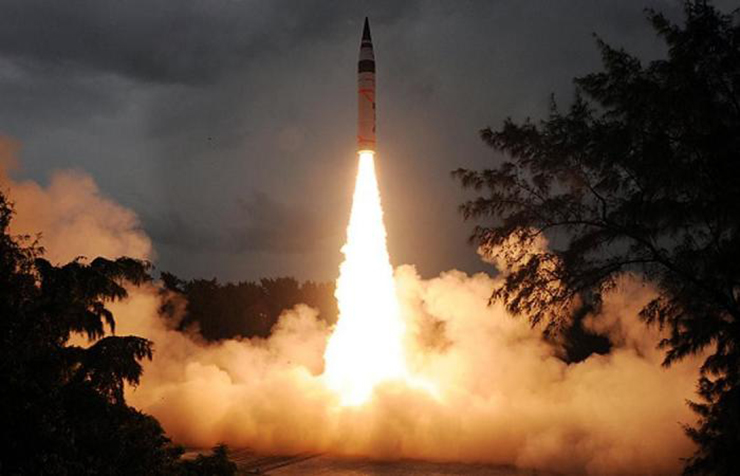
New Delhi: In a counter to China’s missiles like Dongfeng-41, having ranges between 12,000 to 15,000 km, India’s Agni-V project is aimed at boosting India’s nuclear deterrence against China.
India on December 15 successfully test-fired nuclear-capable ballistic missile Agni-V night trials that can strike targets at ranges up to 5,000 km.
The missile developed by Defence Research and Development Organisation (DRDO), was tested at a defence facility from Abdul Kalam Island off the Odisha coast.
According to sources, the test was carried out to validate new technologies and equipment on the missile which is now lighter than before. The trial has proved the capability to enhance the range of the Agni-V missile if required, sources added.
It was in October that India successfully test-fired the Agni-V missile.
“A successful launch of the Surface-to-Surface Ballistic Missile, Agni-V, was carried out on October 27, 2021, at approximately 1950 hrs from APJ Abdul Kalam Island, Odisha. The missile, which uses a three-stage solid-fuelled engine, is capable of striking targets at ranges up to 5,000 kilometres with a very high degree of accuracy,” said the Ministry of Defence (MoD) in a statement.
Broadly falling into the category of Inter-Continental Ballistic Missile category, it can carry a payload of 1.5 tonnes and weighs around 50 tonnes. India is the eighth country to have intercontinental ballistic missiles after the US, UK, Russia, China, France, Israel and North Korea.
Agni series of missiles include from I to V and Agni-V, the most advanced of them was first tested in 2012. At present, in addition to the Agni-V, other Agni missiles that India has are: Agni-I with a 700-km range, Agni-II with a 2,000-km range, Agni-III and Agni-IV with 2,500 km to more than 3,500 km range.








